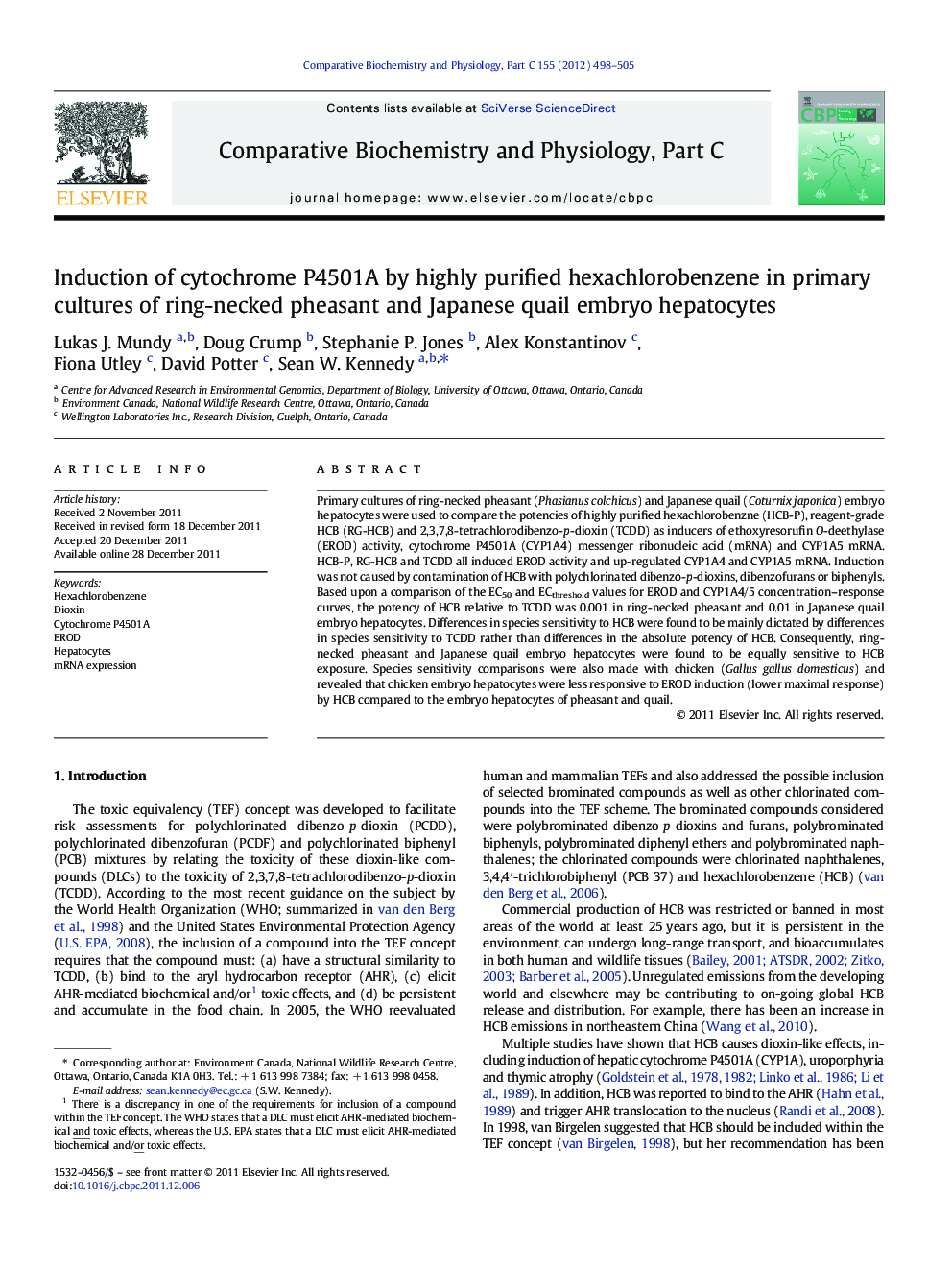| کد مقاله | کد نشریه | سال انتشار | مقاله انگلیسی | نسخه تمام متن |
|---|---|---|---|---|
| 10821647 | 1061491 | 2012 | 8 صفحه PDF | دانلود رایگان |
عنوان انگلیسی مقاله ISI
Induction of cytochrome P4501A by highly purified hexachlorobenzene in primary cultures of ring-necked pheasant and Japanese quail embryo hepatocytes
دانلود مقاله + سفارش ترجمه
دانلود مقاله ISI انگلیسی
رایگان برای ایرانیان
کلمات کلیدی
موضوعات مرتبط
علوم زیستی و بیوفناوری
بیوشیمی، ژنتیک و زیست شناسی مولکولی
زیست شیمی
پیش نمایش صفحه اول مقاله

چکیده انگلیسی
Primary cultures of ring-necked pheasant (Phasianus colchicus) and Japanese quail (Coturnix japonica) embryo hepatocytes were used to compare the potencies of highly purified hexachlorobenzne (HCB-P), reagent-grade HCB (RG-HCB) and 2,3,7,8-tetrachlorodibenzo-p-dioxin (TCDD) as inducers of ethoxyresorufin O-deethylase (EROD) activity, cytochrome P4501A (CYP1A4) messenger ribonucleic acid (mRNA) and CYP1A5 mRNA. HCB-P, RG-HCB and TCDD all induced EROD activity and up-regulated CYP1A4 and CYP1A5 mRNA. Induction was not caused by contamination of HCB with polychlorinated dibenzo-p-dioxins, dibenzofurans or biphenyls. Based upon a comparison of the EC50 and ECthreshold values for EROD and CYP1A4/5 concentration-response curves, the potency of HCB relative to TCDD was 0.001 in ring-necked pheasant and 0.01 in Japanese quail embryo hepatocytes. Differences in species sensitivity to HCB were found to be mainly dictated by differences in species sensitivity to TCDD rather than differences in the absolute potency of HCB. Consequently, ring-necked pheasant and Japanese quail embryo hepatocytes were found to be equally sensitive to HCB exposure. Species sensitivity comparisons were also made with chicken (Gallus gallus domesticus) and revealed that chicken embryo hepatocytes were less responsive to EROD induction (lower maximal response) by HCB compared to the embryo hepatocytes of pheasant and quail.
ناشر
Database: Elsevier - ScienceDirect (ساینس دایرکت)
Journal: Comparative Biochemistry and Physiology Part C: Toxicology & Pharmacology - Volume 155, Issue 3, April 2012, Pages 498-505
Journal: Comparative Biochemistry and Physiology Part C: Toxicology & Pharmacology - Volume 155, Issue 3, April 2012, Pages 498-505
نویسندگان
Lukas J. Mundy, Doug Crump, Stephanie P. Jones, Alex Konstantinov, Fiona Utley, David Potter, Sean W. Kennedy,